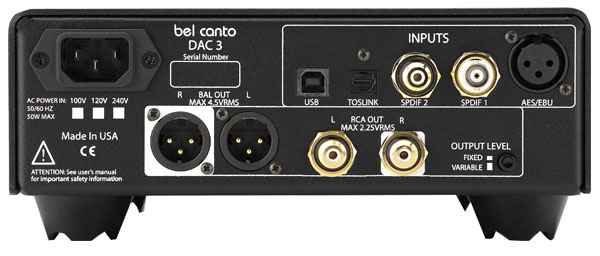Scrith
500+ Head-Fier
I was browsing the PS Audio forums and came across an interesting post from Paul McGowan (of PS Audio), in response to a question about why their new DAC doesn't have an AES/EBU input. Here's the relevant part:
Quote:
So, I'm curious...any feedback on this? Are many (or most) of the AES/EBU outputs out there (especially off simpler devices, such as sound cards) a compromise?
By the way, Mr. McGowan is a friendly, knowledgable, responsible person who has taken the time over the years to post more than 5000 times at his company's forum. Please don't demean yourself by taking this as an opportunity to insult him or his company...I am just curious about the possibility that the much-heralded AES/EBU interface may, in fact, not be all its cracked up to be, in some cases.
Quote:
| In hindsight, we didn't include the AESEBU for two reasons: not enough rear panel space and, more importantly, degraded performance from most CD transports using the AESEBU. What? Yes. The problem is that very few CD and DVD players produce a true AESEBU signal that is indeed better than the single ended SPDIF out. On these players, I prefer to use single ended SPDIF or optical. Here's the deal. In most CD players and DVD players, the AESEBU is identical to the SPDIF output, except there's an extra inverter added to the signal. So, to make an AESEBU out, you simply take the SPDIF out and run it through an inverter chip (to make the opposite phase)and then put that signal on the XLR jack. That's it. Every less-than-$3K CD player does it this way and I am not a fan. I am not a fan because one side is different (slightly delayed) than the other side (because it had to go through an extra gate). The only other way to do this is with a high end output pulse transformer. To do that properly, you need a really good transformer like a Jensen silver (and even that rounds off the edges). Cost on these is really high - and most never bother to spend the extra dollars. I'd be willing to bet money your transport does not have the proper method of producing AESEBU. So 99% of all CD players and DVD players uses the wrong method - few use the right method. We believe that for a $1K DAC (heck, for any priced DAC) it's better to build it without compromises and with 99% of the transports in mind. I would rather use a perfect SPDIF output to the DAC than a compromised AESEBU input to make people feel better. And that's what most people have on their players. |
So, I'm curious...any feedback on this? Are many (or most) of the AES/EBU outputs out there (especially off simpler devices, such as sound cards) a compromise?
By the way, Mr. McGowan is a friendly, knowledgable, responsible person who has taken the time over the years to post more than 5000 times at his company's forum. Please don't demean yourself by taking this as an opportunity to insult him or his company...I am just curious about the possibility that the much-heralded AES/EBU interface may, in fact, not be all its cracked up to be, in some cases.

































